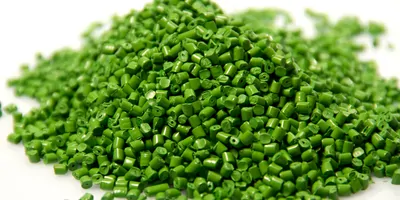
Megan Mohadjer Beromi, PhD, assistant professor at the United States Naval Academy’s Department of Chemistry, and Paul Chirik, PhD, Edwards S. Sanford Professor of Chemistry at Princeton University, highlight some of the key factors contributing to an over-abundance of plastic products, and how chemical recycling can offer a solution to global plastic waste issues.

Q: What are some common challenges when it comes to polymer recycling today?
A: The challenges associated with polymer recycling today are rooted in our inability to manage waste on scale. According to a study by Geyer, Jambeck, and Law, less than 10 percent of all plastics ever made have been recycled, and less than 10 percent of that recycled material has been recycled more than once. Current mechanical recycling technologies require that plastic waste is collected efficiently, properly separated, decontaminated, and is attempted to be reused. It is often the case, however, that the mechanically-recycled plastic is unsuitable for its initial purpose due to degradation. Typically, 90 percent of the plastic’s strength is lost after one iteration of mechanical recycling, which is not sustainable.
There is also an economic component to recycling—it is often cheaper to make virgin materials than it is to recycle materials already in use, meaning recycling is more expensive than just making new plastic and throwing away the old products. This latter point has largely contributed to the environmental accumulation of products that we are observing today.
Q: What progress has been made in recent years on the recycling of polymeric waste? What technologies are emerging?
A: The concept of “chemical recycling” where the plastic is returned to monomer is an alternative strategy for mitigation of plastics. Because you are recovering pure chemicals from the polymeric waste, value loss is potentially minimized. However, given the stability of plastic materials that we use every day, breaking down plastics chemically is extremely difficult and energy intensive; further, returning them down to monomer that can then be repolymerized is even more difficult. Nevertheless, exciting technologies that can break down plastics into smaller, useful chemicals have emerged over the last several years.
Q: Why is closed-loop recycling a better option compared to open-loop?
A: With closed-loop recycling, all waste is accounted for—that is, no material “escapes” the loop and ends up as waste that enters our environment. In an ideal closed-loop process, the waste plastics can be quantitatively deconstructed and then quantitatively rebuilt with no value or material loss. Not only are there environmental benefits, but also benefits in sourcing the starting materials we use to construct plastics. If we know that we can get the same quality material out of the polymers that we recycle, it dissociates our reliance on virgin materials to make our products and minimizes waste.
Q: Can you explain your work in developing the “polymer of squares” (oligocyclobutane) and what makes it unique?
A: The polymer of squares is a new polymer of butadiene. Polymers of butadiene (polybutadienes) have been known for over a century and find application in everything from the soles of shoes to golf balls to tubing. However, these polybutadienes, on a molecular level, are like intertwined chains of spaghetti and recalcitrant to chemical recycling. With the polymer of squares, we have discovered a new way to bond the butadiene units (into, quite literally, repeat units of squares through what is called a “cycloaddition reaction”) to make a structure that can be chemically recycled back to butadiene. Further, our process returns only butadiene. No other side products are observed from the depolymerization process. This marks an exceedingly rare case in which a polymeric hydrocarbon—a molecule composed of just carbon and hydrogen, which makes it very stable—can be deconstructed back to its monomer, and only its monomer.
Q: Can you elaborate on some of the intriguing properties of the polymer of squares, and how these properties of interest could form the basis of future research on chemically recyclable materials?
A: Not only is the polymer of squares chemically recyclable, but it has other unique physical and chemical properties that are markedly different than other polybutadienes. Although we currently cannot make very long chains of squares in our synthesis, the polymers we do make are extremely crystalline and thermally robust, owing to its unique molecular structure. They also exhibit liquid-crystalline behavior when melted. These features change the applications we can envision for the polymer of squares due to its remarkable stability. Further, the polymer of squares is telechelic, meaning we can functionalize the ends of the chains of polymer after we synthesize it. This significantly broadens the available types of structures that we can make with the polymer of squares. Because we can incorporate this polymer motif into a variety of structures, we can, in theory, integrate chemical recyclability into a broad range of materials.
Advanced Lab Management Certificate
The Advanced Lab Management certificate is more than training—it’s a professional advantage.
Gain critical skills and IACET-approved CEUs that make a measurable difference.
Q: What impact can chemical recycling have on reducing the enormous global plastic waste problem? What challenges still need to be overcome to increase chemical recycling on a larger scale?
A: Chemical recycling can have a significant impact on the plastic waste problem by providing a new way to look at our waste plastics. If we view our waste plastics as reserves for pure, useful chemicals that we can “mine” by chemical recycling, then we are not restricted to just disposing of our waste and leaching it into the environment. Recovery of starting materials from our waste plastics through chemical recycling provides massive value to our otherwise value-less body of plastic waste, and can even decouple our sourcing of starting materials from the petrochemical market.
The challenges that still need to be overcome are multifold—chemical recycling requires that we collect our waste materials efficiently. Further, chemical recycling is restricted to only a few structures of polymers, and for the most part, the processes for chemical recycling are energy intensive. New methods are needed to broaden the scope of chemical recycling and make it economically feasible to do on scale.
Q: What’s next for the Chirik Lab and the polymer of squares?
A: This is only the beginning. We discovered the first new example in over a century and we have many opportunities to explore its structure and properties. We have teamed with engineering groups to measure the physical properties of this new material. At the same time, we are exploring new catalysts to control what is called “stereochemistry”—the relation in space between adjacent squares. If we can make a material where the orientation is all the same direction, we anticipate a much tougher and stronger plastic. We are currently searching for iron catalysts to do that. We are also focused on making polymers of higher molecular weight and looking for new catalysts that are more efficient at chemical recycling. This will keep us busy for a while!
Megan Mohadjer Beromi obtained her PhD in inorganic chemistry in 2019, after which she continued to Princeton University as an NIH Ruth Kirschstein Postdoctoral Research Fellow in the lab of professor Paul Chirik. After a two-year postdoctoral tenure, Beromi joined the United States Naval Academy’s Department of Chemistry as an assistant professor in the summer of 2021, with plans to continue her research in the metal-mediated chemical recycling of plastics.
Paul Chirik, PhD, is the Edwards S. Sanford Professor of Chemistry at Princeton University. He is the author of more than 225 publications and co-inventor on 20 patents. His research and teaching have been recognized with the Linus Pauling Medal, the Presidential Green Chemistry Challenge Award, the Eni Environmental Solutions Prize, the Gabor Somorjai Award for Creative Research in Catalysis, and a Packard Fellowship. He is currently editor-in-chief of Organometallics.












